
Cilicia is a geographical region in southern Anatolia, extending inland from the northeastern coasts of the Mediterranean Sea. Cilicia has a population ranging over six million, concentrated mostly at the Cilician plain. The region includes the provinces of Mersin, Adana, Osmaniye, Kilis and Hatay.

Anthony of Padua, OFM, or Anthony of Lisbon was a Portuguese Catholic priest and member of the Order of Friars Minor.

The Latin Church of the Catholic Church has several dispersed populations of members in the Middle East, notably in Turkey, Cyprus and the Levant. Latin Catholics employ the Latin liturgical rites, in contrast to Eastern Catholics who fall under their respective church's patriarchs and employ distinct Eastern Catholic liturgies, while being in full communion with the worldwide Catholic Church. Latin Catholics in the Middle East are often of European descent, particularly from the medieval Crusader era and later the 20th-century colonial period.
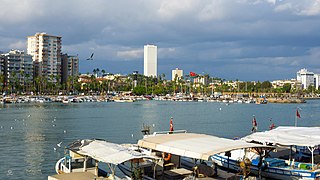
Mersin is a large city and port on the Mediterranean coast of southern Turkey. It is the provincial capital of the Mersin Province. It is made up of four district governorates, each having its own municipality: Akdeniz, Mezitli, Toroslar and Yenişehir.
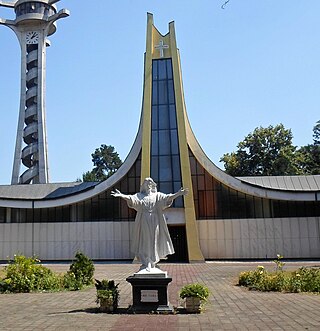
The Diocese of Banja Luka is a Latin Church diocese of the Catholic Church in western Bosnia. The diocese is centred in the city of Banja Luka, Republika Srpska, Bosnia and Herzegovina.

Mersin Province, formerly İçel Province, is a province and metropolitan municipality in southern Turkey, on the Mediterranean coast between Antalya and Adana. Its area is 16,010 km2, and its population is 1,916,432 (2022). The provincial capital and the biggest city in the province is Mersin, which is composed of four municipalities and district governorates: Akdeniz, Mezitli, Toroslar and Yenişehir. Next largest is Tarsus, the birthplace of Paul the Apostle. The province is considered to be a part of the geographical, economical and cultural region of Çukurova, which covers the provinces of Mersin, Adana, Osmaniye and Hatay.

The Catholic Church in Turkey is part of the worldwide Catholic Church, under the spiritual leadership of the Pope and the canonical leadership of the curia in Rome that is submitted to the Pope.

The Church of St. Anthony of Padua, alternatively known as Sant'Antonio di Padova Church or S. Antonio di Padova, is the largest Catholic church in Istanbul, Turkey. It is located on İstiklal Avenue in the Beyoğlu district.

The Apostolic Vicariate of Anatolia is a Roman Catholic Latin apostolic vicariate in the eastern half of Anatolia.

Saint Paul's Church is a former church in Tarsus, Mersin Province, Turkey.
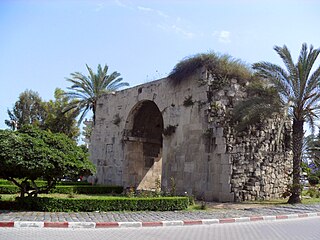
Cleopatra's Gate is a city gate of Tarsus, in Mersin Province, Turkey, named after the Egyptian (Ptolemaic) queen Cleopatra VII.
Karabucak Forest is a forest plantation in Turkey.

Altından geçme is a gate in the city wall of Tarsus, Mersin Province, Turkey, originally part of a Roman bath.
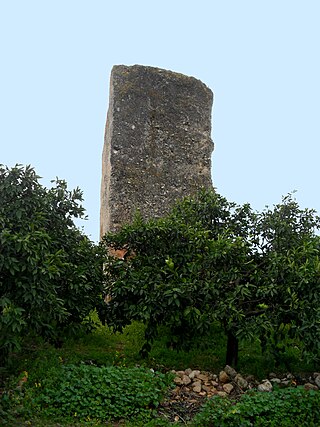
Dikilitaş is a neighbourhood in the municipality and district of Akdeniz, Mersin Province, Turkey. Its population is 1,069 (2022). It takes its name from an ancient Assyrian monument.
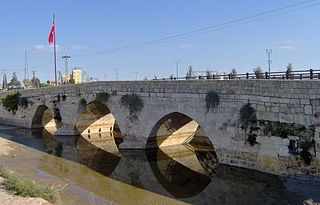
Baç Bridge is a bridge in Tarsus in Mersin Province, Turkey

Levantines in Turkey or Turkish Levantines, are the descendants of Europeans who settled in the coastal cities of the Ottoman Empire to trade, especially after the Tanzimat era. Their estimated population today is around 1,000. They mainly reside in Istanbul, İzmir and Mersin. Anatolian Muslims called Levantines Frenk and tatlısu Frengi in addition to Levanten. Turkish Levantines are mostly Latin Catholics.

The Mousoleum of Danyal is a small complex in Tarsus, Turkey, consisting of a mosque and a tomb, which is believed to be that of the biblical figure Daniel. Two arches of a Roman bridge were found in the basement of the mosque-tomb complex during a renovation project.

Tarsus Çanakkale Park Museum is a museum in Turkey. The main exhibition of the museum is Nusret minelayer. The museum is free of charge.
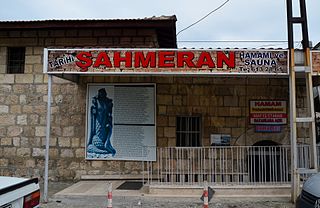
Shahmeran Hamam is a historical hamam in Tarsus, Turkey, associated with the legendary story of Shahmaran.


















